Conny Waters – AncientPages.com – Archaeologists who have been involved in the renovation of the royal castle of Villers-Cotterêts have stumbled upon a unique ancient treasure.
The Château de Villers-Cotterêts has never been open to the public. Yet it has been a focal point of French history and architecture.
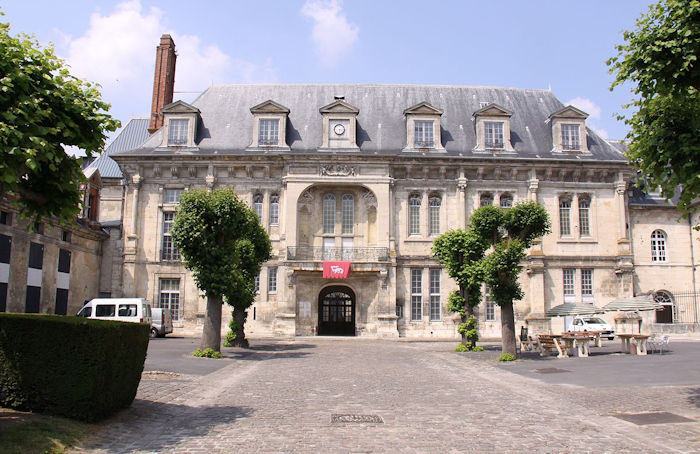
Château de Villers-Cotterêts. Credit: Franquelin – CC BY-SA 3.0
This royal residence was built in 1528 by François I who signed the famous ordinance of Villers-Cotterêts there in August 1539 imposing the French language instead of Latin in all official acts of administration and justice.
Archaeologists from INRAP the Aisne archaeological service have been working inside the castle and its vicinity since 2020. The researchers have now discovered a rare bronze seal matrix with a hollow engraved horseman of Saint George overhanging a dragon in the center, surrounded by a legend in Gothic letters, and by a beaded circle. The caption can be read: “IP PRI/EUR / DEVILLERS / LESM / OINE”.
The legend of Saint George and the Dragon tells of Saint George (died 303) taming and slaying a dragon that demanded human sacrifice.
Why Ancient Seals Are Important To Study
Appearing in Mesopotamia in the 7th millennium, the seal slightly precedes writing. In France, it was taken up from the High Middle Ages by the Merovingian sovereigns and became a sovereign right. In the Merovingian Dynasty, the leader was Clovis I whose reign may have overlapped the end of the 5th century AD and the beginning of the 6th. But before Clovis could defeat the last Roman army in Gaul, he had to descend from a line of kings who had already started to rule.
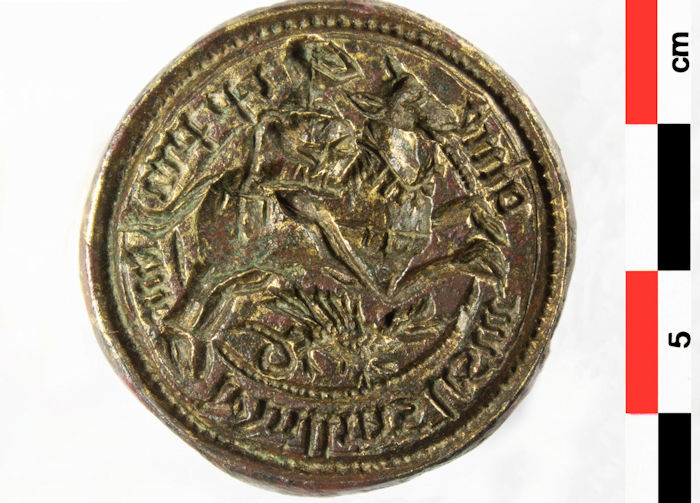
The bronze seal matrix has an engraving of St George slaying the dragon. Credit: Serge Le Maho, Inrap
While Clovis I was considered the founder of the French state, his work was built on those kings who came before. Unfortunately for him, that history has been lost to time and legend. From the 10th century, this royal dynasty crumbled over time. In the 13th century, the seal was to be found everywhere in Medieval society. From the middle of the 15th century, the progress of notaries, the diffusion of the autograph signing, and the generalization of paper led to the decline of sealing. In the Middle Ages, the seal was the only means of authenticating a document.
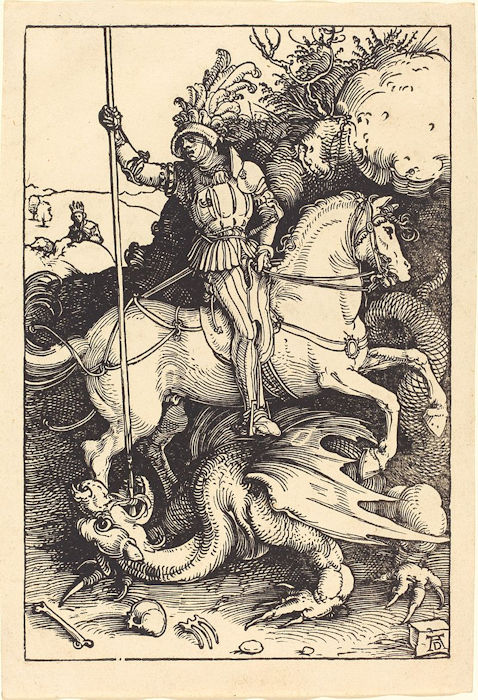
Saint George Killing the Dragon, woodcut by Albrecht Dürer (1501/4). Credit: Public Domain
it is widely believed seals form an ideal object of study for the knowledge of the Middle Ages because they crystallize on their small surface political and social aspirations, modes of representation, diplomatic and legal uses but also anthropological practices. Few seal matrices have survived and even fewer are discovered during archaeological operations: upon the death of the seal holder, the matrix was broken, melted, or, more rarely, buried with its owner.
The Unkown Seal Of A Forgotten Priory
The seal matrix was found in a pocket of coals in a room in the north wing of the house, its owner probably lost it, near a fireplace for example, and it was rejected in the center of the room along with the ashes. Still mobilized in the field, archaeologists have the first elements on this object.
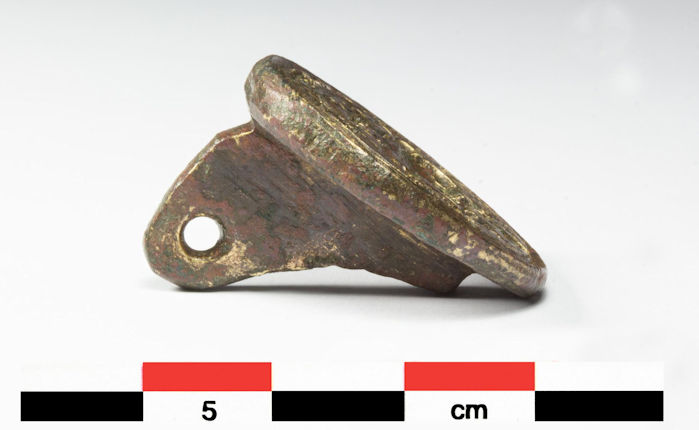
The seal is a rare ancient artifact. Credit: Serge Le Maho, Inrap
It is a bronze matrix of an equestrian seal, with on the back a gripping system with a suspension ring (the matrix could be worn, thanks to a chain, a ribbon, a braided lace, or a leather strap, either around the neck or attached to a belt). It measures approximately 22mm wide, 17mm high, and is 5mm thick.
The face is hollow engraved: in the center, a horseman (Saint George) overhanging a dragon, surrounded by a legend in Gothic letters, then by a beaded circle. The caption can be read: “IP PRI/EUR / DEVILLERS / LESM / OINE”. The rider’s armor (with the use of a closed “jousting” helmet) dates the matrix from the beginning of the 15th century. It is not listed in any archive.
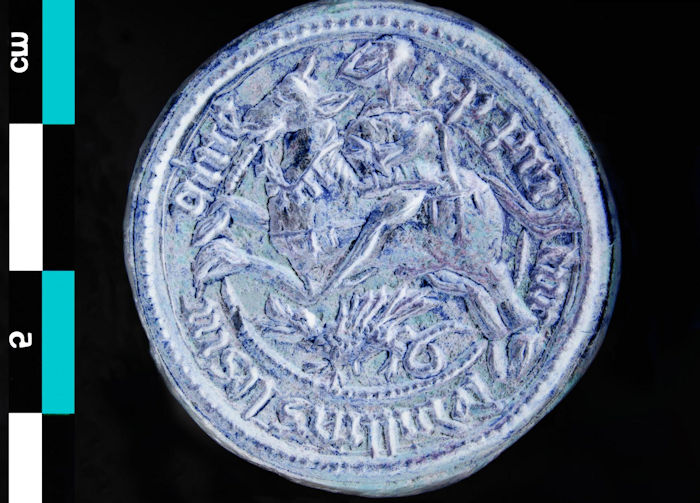
Credit: Serge Le Maho, Inrap
Researchers from INRAP suggest the seal may have belonged to the prior of the Saint-Georges monastery, in Villers-les-Moines, dependent on the abbey of-la-Chaise-Dieu (in Auvergne). Located about 1 km northeast of the castle of Villers-Cotterêts, this priory is poorly documented. It was transformed into a Benedictine convent (Saint-Rémy-Saint-Georges) in the 17th century.
See also: More Archaeology News
This unexpected discovery shows the contribution of archeology to historical knowledge. Once the field operations have been completed, the scientists will be able to investigate not only the archeology of the castle but also the relationship between it and its political-historical environment by closely ᴀssociating archaeological, archival, and historical research.
Written by Conny Waters – AncientPages.com Staff Writer





